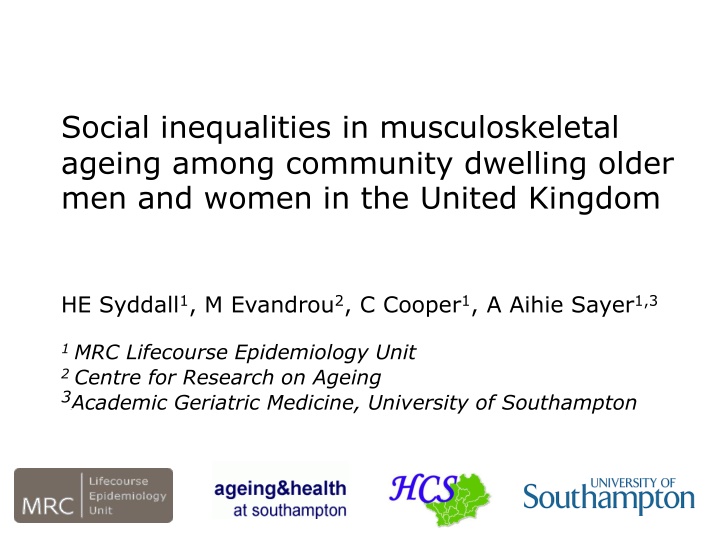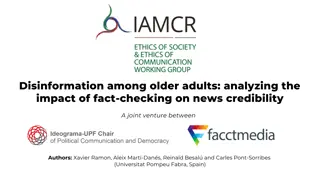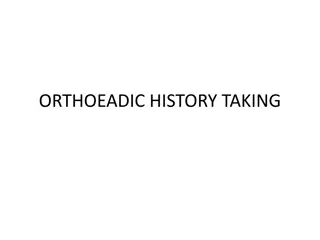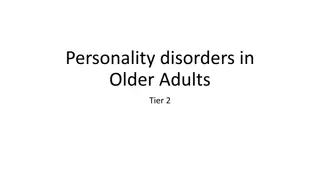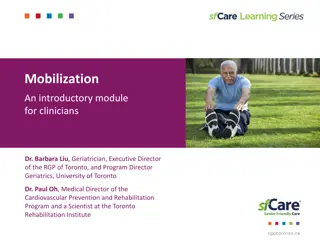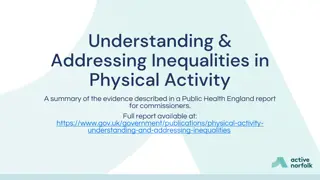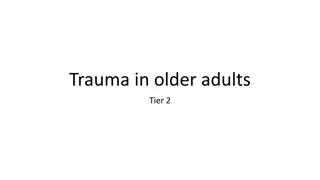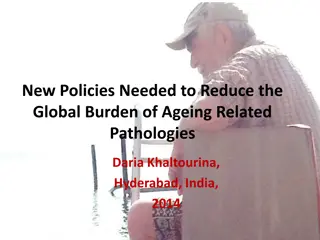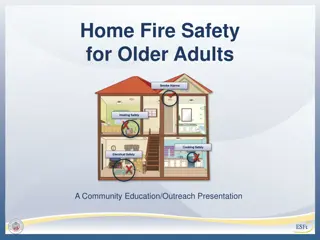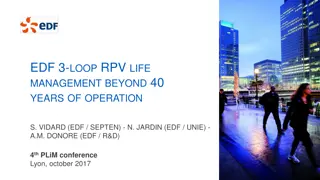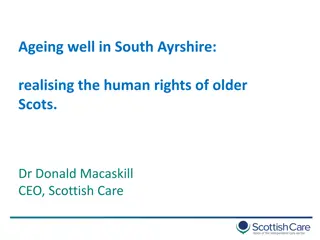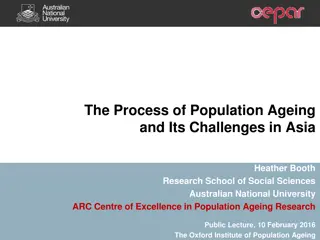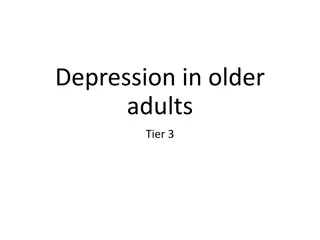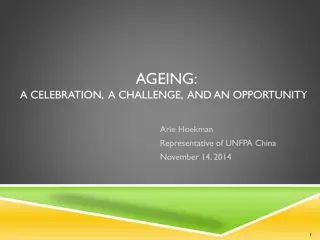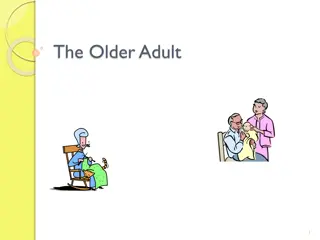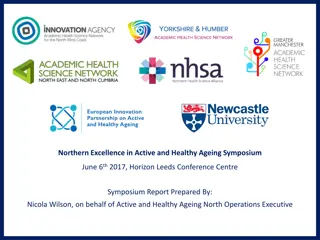Social Inequalities in Musculoskeletal Ageing Among UK Older Adults
Musculoskeletal disorders pose a significant burden on healthcare in the UK, particularly among older individuals. This study aims to explore social inequalities in musculoskeletal ageing among community-dwelling older men and women aged 59-73. Utilizing data from the Hertfordshire Cohort Study, factors such as socioeconomic position, material deprivation, education, and housing tenure are examined to understand the patterns and determinants of musculoskeletal ageing for better health service planning and individual-level interventions.
Download Presentation

Please find below an Image/Link to download the presentation.
The content on the website is provided AS IS for your information and personal use only. It may not be sold, licensed, or shared on other websites without obtaining consent from the author.If you encounter any issues during the download, it is possible that the publisher has removed the file from their server.
You are allowed to download the files provided on this website for personal or commercial use, subject to the condition that they are used lawfully. All files are the property of their respective owners.
The content on the website is provided AS IS for your information and personal use only. It may not be sold, licensed, or shared on other websites without obtaining consent from the author.
E N D
Presentation Transcript
Social inequalities in musculoskeletal ageing among community dwelling older men and women in the United Kingdom HE Syddall1, M Evandrou2, C Cooper1, A Aihie Sayer1,3 1 MRC Lifecourse Epidemiology Unit 2Centre for Research on Ageing 3Academic Geriatric Medicine, University of Southampton of Southampton
Background Musculoskeletal disorders are a major problem in older people and place a substantial burden on UK health and social care services The UK has an ageing population Improved understanding of the patterns and determinants of musculoskeletal ageing is needed for planning of health and social care services, and development of interventions to promote healthy ageing at the individual level.
Background Social inequalities in health have been recognised for centuries Even in generally wealthy Western countries, health inequalities exist across relative levels of deprivation (Reproduced from Fair society, healthy lives , Marmot Review final report, 2010) Little is known about social inequalities in musculoskeletal ageing
Objective To explore social inequalities in musculoskeletal ageing using data from community dwelling young-old men and women, aged 59-73 years, who participated in the Hertfordshire Cohort Study (HCS)
Methods: the Hertfordshire Cohort Study A study of lifecourse influences on human health, ageing and disease 2997 men and women born 1931 1939 Methods paper: Syddall et al, IJE 2005
Methods: data availability Socioeconomic position and material deprivation Age left full time education 503091109,20080508041504,p,120x90,photo1 SoldSigns460X276 Social class in adulthood sciplace123 Housing tenure chapman_hall_classroom_1950s_medium Car availability
Methods: data availability Socioeconomic position and material deprivation Age left full time education 503091109,20080508041504,p,120x90,photo1 SoldSigns460X276 Social class in adulthood sciplace123 Housing tenure chapman_hall_classroom_1950s_medium Car availability Musculoskeletal ageing Grip strength (maximum, Jamar) Self-assessed physical function (SF-36) History of falls in the past year Fried frailty Fracture history (any/minor trauma) DXA scan (total femoral BMD and bone loss rate) Novel pQCT scanning of radius and tibia (strength strain indices)
Results: socioeconomic position and material deprivation % Men Women (N=1541) (N=1684) Left full time education 14 years of age 19.4 17.9 Manual social class (IIIM,IV,V) 59.3 58.4 Housing tenure Owned/mortgaged Rented/other None 1 2 3+ 80.7 19.3 6.4 53.5 32.9 7.3 76.9 23.1 17.1 58.0 21.4 2.9 Household car availability
Results: musculoskeletal ageing Mean (SD) or % Men Women (N=1541) (N=1684) Grip strength (kg) 44.0 (7.5) 26.5 (5.8) Fallen in the past year 14.9 22.6 Fried frailty 4.1 8.5 Any fracture since 45 years of age 14.0 21.6 Minor trauma fracture since 45 years of age 7.7 18.4 DXA total femoral BMD (g/cm2) 1.04 (0.13) 0.90 (0.13) Sample sizes men/women: grip 1572/1415; falls 941/1398; frailty 320/318; DXA BMD 498/468
Results: social inequalities in grip strength 47 29 Men Women Average grip strength P<0.001 P<0.001 46 45 27 44 43 25 42 41 23 40 39 21 None 1 2 3+ None 1 2 3+ Number of cars available for household use 29 Men 47 Women Average grip strength P<0.0001 P<0.0001 46 27 45 44 25 43 42 23 41 40 21 39 Owned/mortgaged Rented/other Owned/mortgaged Rented/other Home ownership
Results: social inequalities in grip strength MEN WOMEN 34 46kg 50 Mean grip strength kg (95%CI) 32 27kg 48 40kg 30 24kg 46 28 44 26 42 24 40 38 22 No cars 1 2 3 or more 1 No cars 2 3 4 5 6 7 8 No cars 1 2 3+ 1 2 3+ Owned/mortgaged Rented/other Owned/mortgaged Rented/other Fully adjusted p-values: p=0.02 for housing tenure and p=0.03 for car availability in men; p=0.004 for housing tenure and p=0.002 for cars in women
Results: social inequalities in physical functioning 52% MEN WOMEN Prevalence (%) of poor PF (95%CI) 90 70 80 60 42% 70 50 60 14% 15% 40 50 40 30 30 20 20 10 10 0 0 No cars 1 2 3 or more 1 No cars 2 3 4 5 6 7 8 No cars 1 2 3+ 1 2 3+ Owned/mortgaged Rented/other Owned/mortgaged Rented/other Poor PF defined as a score in the lowest fifth of the sex-specific distribution (<=75 for men; <=60 for women). Fully adjusted p-values: p=0.003 for housing tenure and p<0.001 for car availability in men; p=0.12 for housing tenure and p=0.05 for cars in women
Results: social inequalities in Fried frailty 18 18 16 16 p=0.01 men p=0.16 women p=0.05 men p=0.02 women 14 14 12 12 10 10 % Frail 8 8 6 6 4 4 2 2 0 0 Owned/mortgaged Rented/other None Number of cars available for household use 1 2 3+ Home ownership Men Women
Discussion Recap: we have identified a specific pattern of evidence for social inequalities in muscle, but not bone, based aspects of musculoskeletal ageing
Discussion Recap: we have identified a specific pattern of evidence for social inequalities in muscle, but not bone, based aspects of musculoskeletal ageing Why?
Discussion Recap: we have identified a specific pattern of evidence for social inequalities in muscle, but not bone, based aspects of musculoskeletal ageing Why? height and fat mass different social patterning and different associations of muscle and bone with diet physical activity
Discussion Recap: we have identified a specific pattern of evidence for social inequalities in muscle, but not bone, based aspects of musculoskeletal ageing Why? height and fat mass different social patterning and different associations of muscle and bone with diet physical activity Responsiveness of ageing muscle and bone to physical activity Further research is needed to identify the impact of different types of physical activity (resistance/aerobic; customary/occupational) on social inequalities in musculoskeletal ageing
Conclusions Any clinical interventions designed to reduce the loss of muscle mass and function with age should be targeted proportionately across the social gradient; strategies to reduce fracture and osteoporosis should continue with a universal population focus There exists a subgroup of older men and women in the UK who face increased levels of material deprivation in combination with greater loss of muscle strength and physical function It is these men and women who urgently need the government to commit to reform of the funding system for adult care and support
Acknowledgements Study participants Hertfordshire GPs Hertfordshire Cohort Study Team Professors Avan Aihie Sayer, Maria Evandrou and Cyrus Cooper Funding: MRC University of Southampton BHF, ARC, NOS, Wellcome Trust
